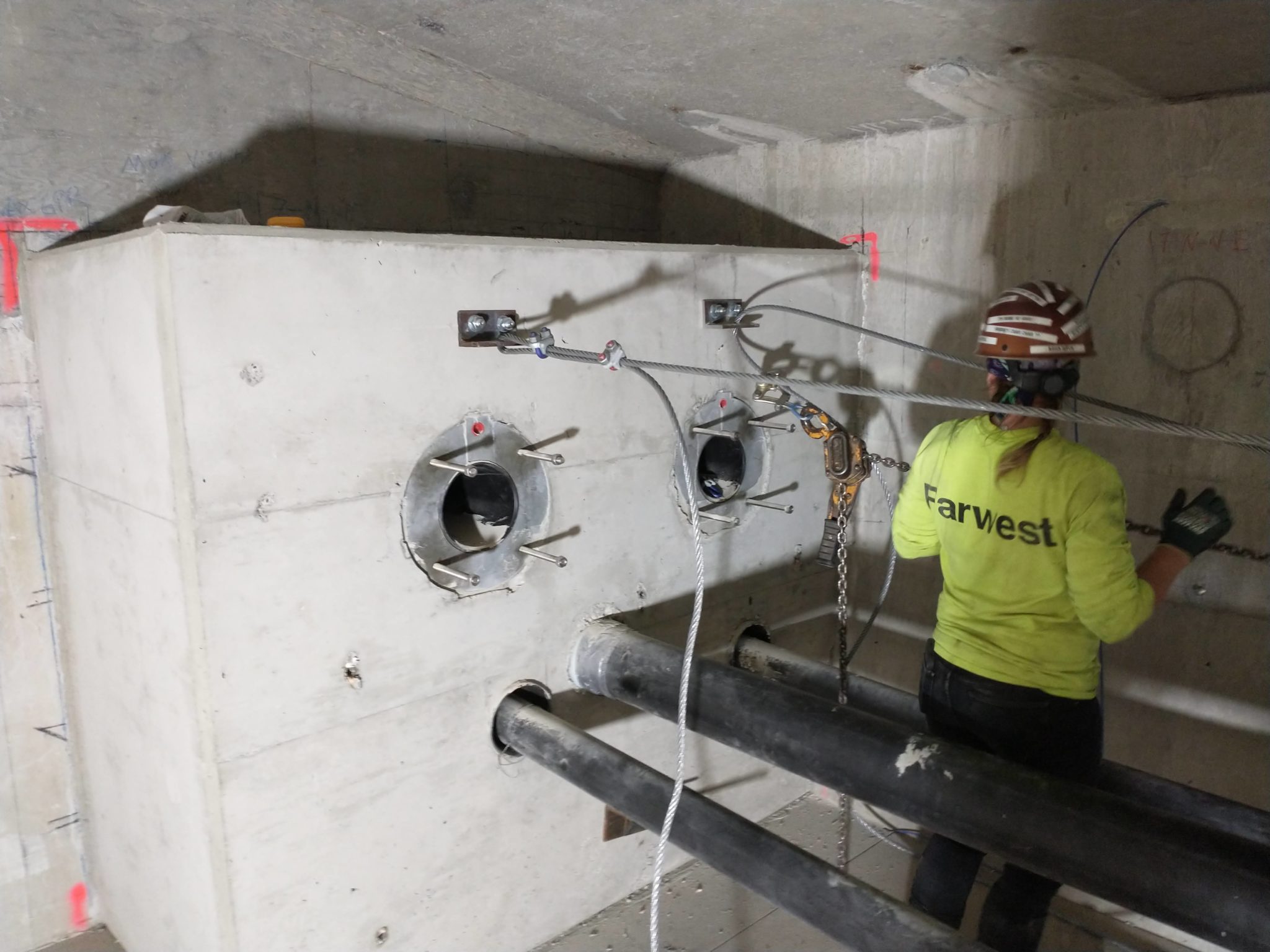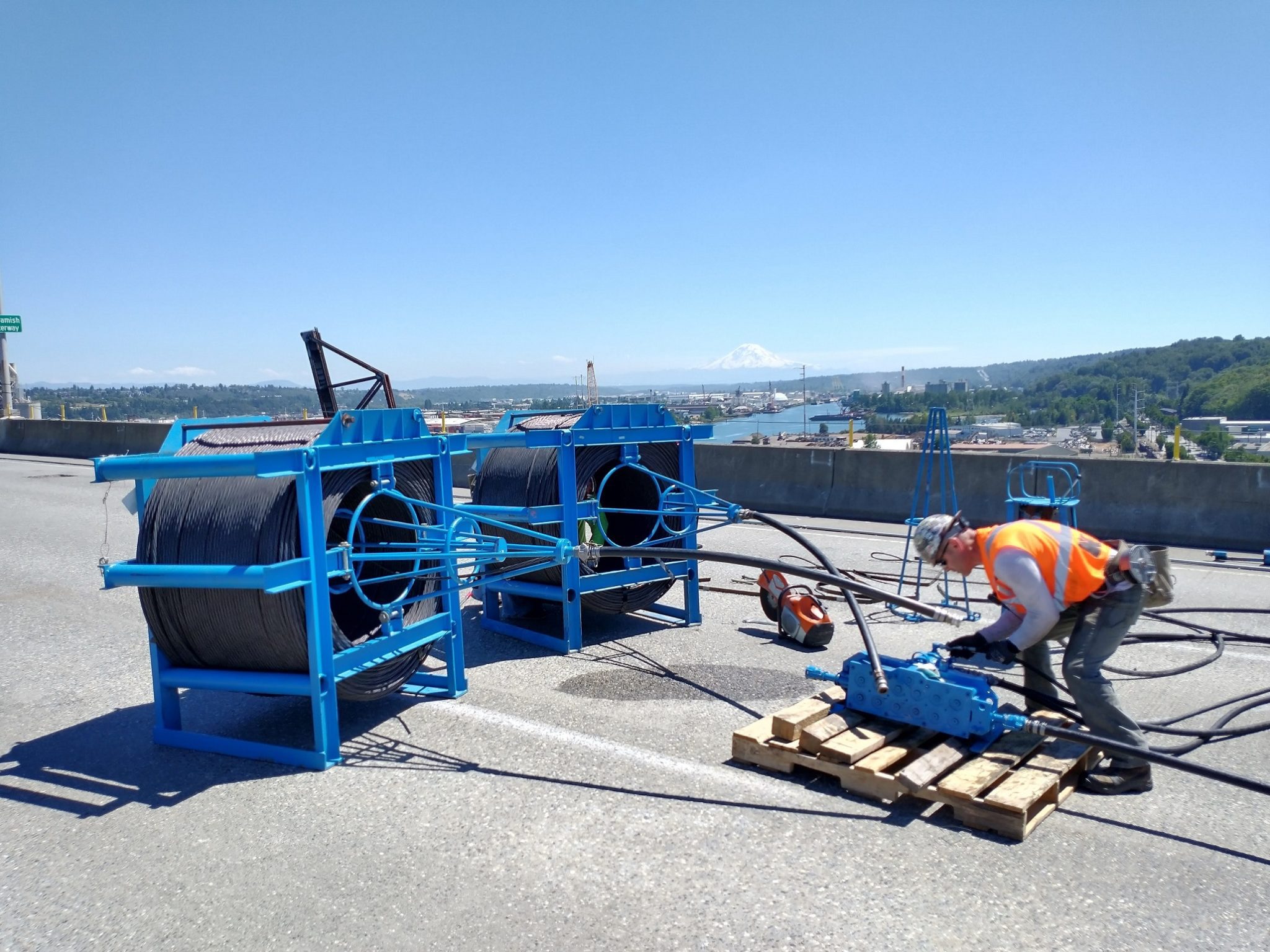We have reached another major construction milestone on the West Seattle High Bridge repairs: we’ve completed tightening the steel post-tensioning cables inside the bridge. Crews began the tightening process early last week. This is an important part of our work to strengthen and fully repair the bridge, and brings us one step closer to reopening as planned.
Post-tensioning cables support and strengthen the bridge
Post-tensioning steel cables reinforce the bridge structure and help prevent it from cracking. Post-tensioning also helps the bridge better support itself and respond to environmental factors such as weather, vehicle loads, and other external forces.
We completed an initial phase of post-tensioning on the high bridge in 2020 in the main span. This most recent second phase (detailed below) added a new post-tensioning system in the center and side spans to help fully rehabilitate the bridge.
Recap of the post-tensioning installation process
April and May 2022: Post-tensioning work begins
We began the process of installing a new post-tensioning system back in April when crews started pouring the structural concrete components for the new system’s foundation. We poured the last structural concrete elements at the end of May. Following that, we worked to build and position pipes inside the bridge that house and protect the post-tensioning cables.

June 2022: Threading post-tensioning cables
Using specialized equipment, crews then pushed the steel cables through the newly installed pipes that span the length of the bridge. Installing the cables added nearly 250,000 feet of new post-tensioning cables to the bridge!

July 2022: Cable tensioning to 20%, then 100%
The final step in the tensioning process was to tighten the cables by pulling on them with hydraulic equipment. This type of equipment is fitted over the steel cables and uses a highly pressured liquid to pull and tighten each cable.
Pulling the cables compresses the concrete within the surrounding structure, significantly increasing the bridge’s strength. We tightened each cable in a specific sequence to ensure that the bridge structure is compressed evenly and consistently throughout the process.
When we started the process of tightening the cables, we first pulled each cable to about 20 percent of its final tension force. Pulling the cables to 20 percent provided engineers with a vital quality-control data point for the final stressing because the inspectors cannot see the cables as they are stressed in the pipes. How much the cables are stretched is checked against the final force to ensure no individual strands are damaged or broken during the stressing process. We then increased tightening to pull each cable to 100 percent of its final tension force, maximizing the bridge’s strength and making it stronger than ever.

Post-tensioning is one of three key repair procedures we’re using to bring the bridge back to service: epoxy injections to fill cracks, carbon-fiber wrapping to add strength, and post-tensioning with steel cables to compress the concrete. Together, these methods will strengthen the entire structure, prevent future cracking, and help keep the bridge safe for decades to come.
Looking ahead to reopening
With post-tensioning complete, the remaining tasks to reopen the West Seattle Bridge are:
- Complete final epoxy injections and carbon-fiber wrapping
- Complete cure time for the carbon-fiber wrapping
- Remove work platforms
- Load test and inspect the repairs
- Restore the pavement on the bridge deck
- Remove construction equipment and get the bridge ready for the public
Our contractor’s crews are working diligently to complete the repair procedures without compromising safety. They are currently working up to seven days a week to maintain the timely opening of the bridge for the West Seattle and Duwamish Valley communities.
We are continuing to work towards reopening the West Seattle Bridge. Read our blog post to learn more about how we’re managing risk factors to minimize the potential for delays. We will continue to provide ongoing construction updates and keep you posted as we wrap up the remaining repair tasks.